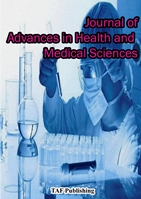
|
Published online: 2021
Abstract
Adolescent girls are one of the groups that are prone to iron deficiency anemia because they have a high need for iron for growth. Iron nutritional anemia in adolescent girls is at a higher risk because they are very concerned about body shape (body image). Many limit their food consumption and follow a strict diet. Riskesdas 2018, the prevalence of anemia in adolescents is 32%, meaning that 3-4 out of 10 adolescents suffer from anemia. Riskesdas 2018 data shows that 25,7% of adolescents aged 13-15 years and 26,9% of adolescents aged 16-18 years with short and very short nutritional status. In addition, 8,7% of adolescents aged 13-15 years and 8.1% of adolescents aged 16-18 years with thin and very thin conditions. In contrast, the prevalence of overweight and obesity is 16,0% in adolescents aged 13-15 years and 13,5% in adolescents aged 16-18 years. The purpose of this study was to determine the relationship between Body Mass Index (BMI) and the incidence of anemia in adolescent girls. This study uses a meta-analysis study. Researchers carried out research data collection by browsing online journals, using the PubMed, ScienceDirect, and Google Scholar databases. Analysis of the results using the application Review Manager 5.4.1. The results of this study are the BMI variable with the I2 value obtained is 74% and the p - value of the heterogeneity test < 0.05, meaning that the heterogeneity between studies is quite high. The Random Effect Model produces a combined effect size value of 1,84 (95% CI 1,17-2,90) diamond with a significant test z - value = 2,63, p = 0.009. The results of the meta-analysis of 9 articles showed that there was a tendency of the relationship betwee BMI and the incidence of anemia in adolescent girls, with a p - value < 0,05, namely p = 0,009 and a pooled odds ratio value of 1,84 (95% CI 1,17 - 2,90). |